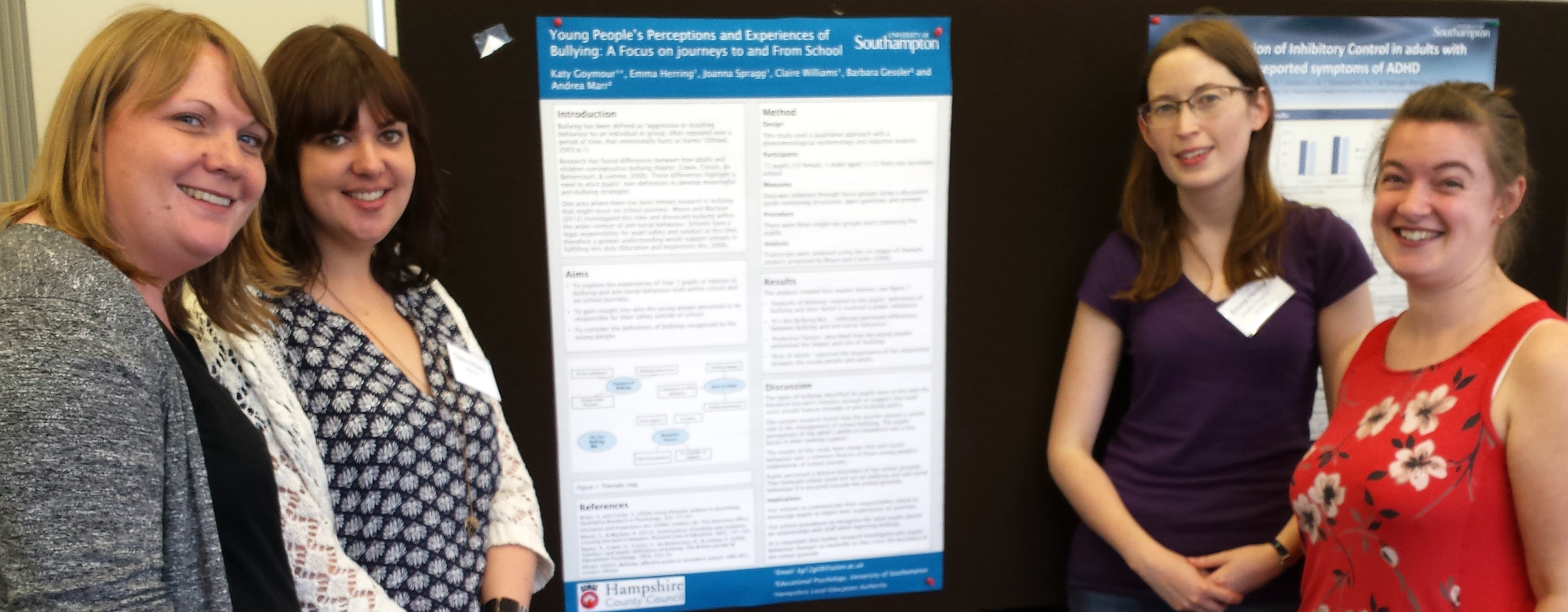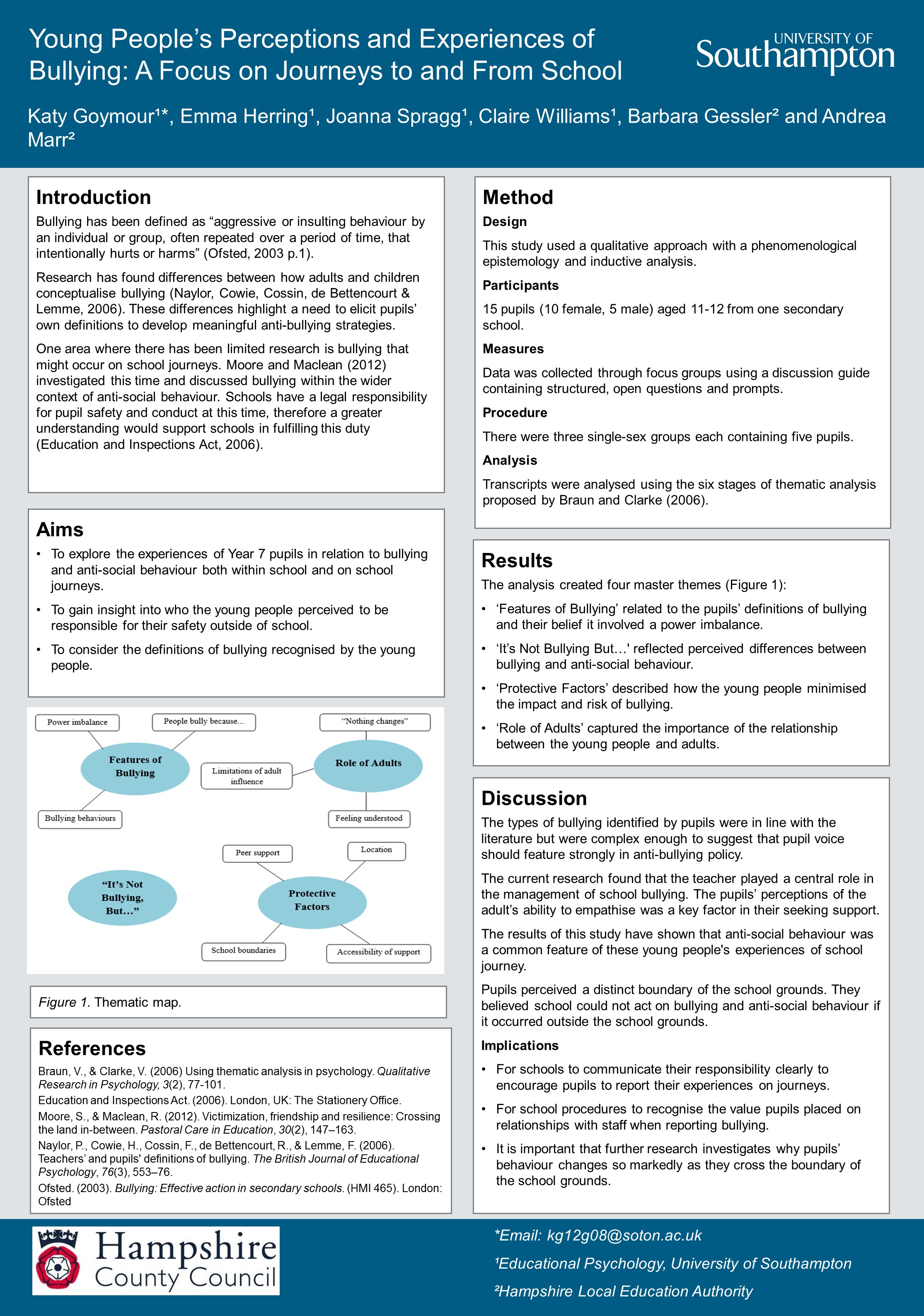Assignment type: Research Project (Small Scale Research Project, Year 1)
Authors: Katy Goymour, Emma Herring, Joanna Spragg, Claire Williams, Barbara Gessler, Andrea Marr and Hanna Kovshoff
Submitted: Spring 2016

The poster for this research study won first place at the 2016 Southampton School of Psychology Post Graduate Research Conference.
Research Summary:
Bullying appears to be an unpleasant but inevitable part of school for many pupils, and has been shown to impact on emotional well-being and academic achievement, both in the short and the long-term.
One criticism of bullying research is that there is still not an adequate and uniformly accepted definition of bullying. A great deal of past research has relied on surveys and adult definitions of bullying, meaning that the reality of bullying for young people may be being missed. A further gap in our understanding of bullying is pupils’ experiences of travelling to and from school. A time and place with limited adult supervision, a factor linked to an increase in bullying in specific areas in secondary schools, few studies have examined bullying on the journey to and from school. This is despite Ofsted reporting that 11% pupils felt unsafe on school journeys.
In a recent research project, Katy Goymour, Emma Herring, Joanna Spragg, Claire Williams, and Hanna Kovshoff from the University of Southampton, explored secondary school pupils’ understanding of bullying and experiences of travelling to and from school. In three single-sex focus groups, 15 year seven pupils from a secondary school in the South-East of England were interviewed, and thematic analysis was used to explore the transcripts.
Pupils’ understanding of bullying was focused on a perceived power imbalance between bully and victim, and they felt that bullies sought to acquire greater power and status within their social group. Bullying was seen as intentional and repetitive, and the pupils discussed different forms of bullying mentioned in the research literature, such as physical, verbal, relational, and cyber.
When describing their journey to and from school, the pupils frequently mentioned anti-social behaviour which they found distressing to witness although they did not report any incidents of bullying. Labelled as “it’s not bullying but…” these anti-social behaviours were not defined by the pupils as bullying due to the absence of a targeted victim but seemed to be a core feature of the school journey. In fact, pupils perceived a clear boundary at the school grounds, with being within the school seen as protective. They distinguished behaviour which occurred inside school from that which happened outside. Pupils believed that incidents which happened when travelling to and from school should remain there, that school had no authority to act about incidents on the journey, and they generally had little understanding of what action they should take if bullying or anti-social behavior took place there.
When talking about bullying in school, the pupils were more likely to seek support from a trusted adult whom they felt would understand the situation. Although they also described feeling frustrated about the lack of change after reporting bullying in the past, and this has had lead them to generate their own strategies such as avoidance or retaliation.
Caution is needed when interpreting the results of this study due to the small sample size within a single secondary school, and the tendency of the pupils to discuss bullying in all contexts in which they were aware of it rather than provide greater details about their journeys. Interviewing the pupils within their school may have encouraged them to reflect on bullying within this setting. However as bullying on the school journey has been the subject of so little research, the finding that this is a time and place in which pupils witness a great deal of upsetting, anti-social behaviour suggests it is worthy of further investigation. It is also interesting that pupils are not aware of schools’ legal responsibility for their pupils’ safety and conduct on journeys. Schools should perhaps give their students a sense of the procedures in place to tackle bullying on the journey and what action students should take to report it.

